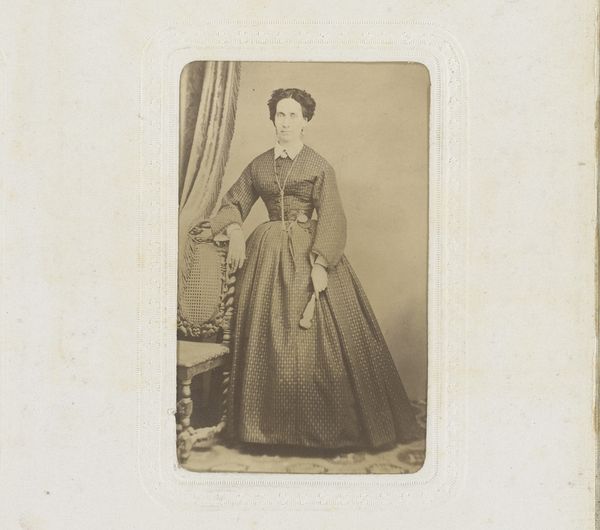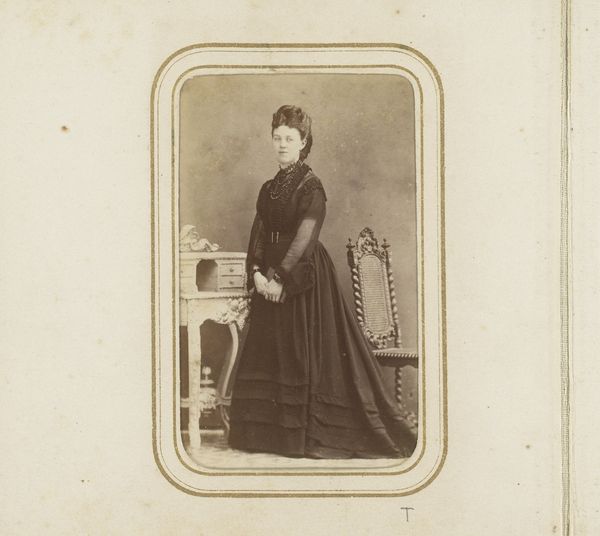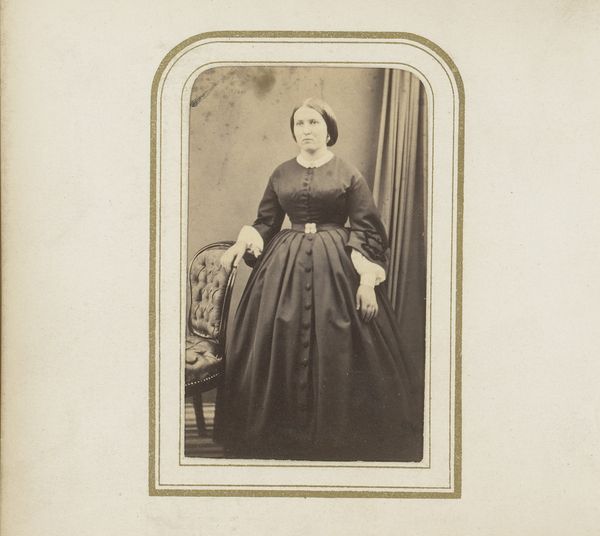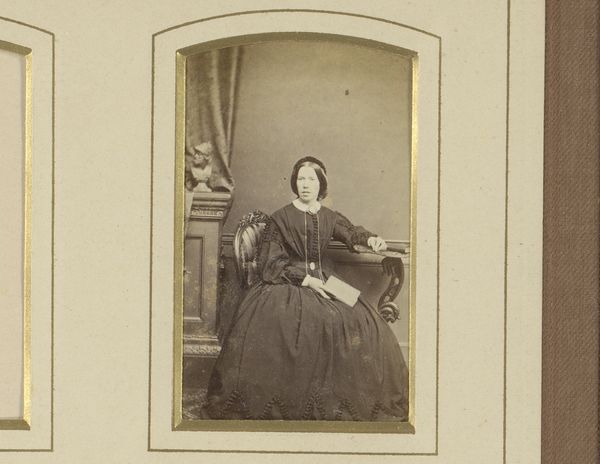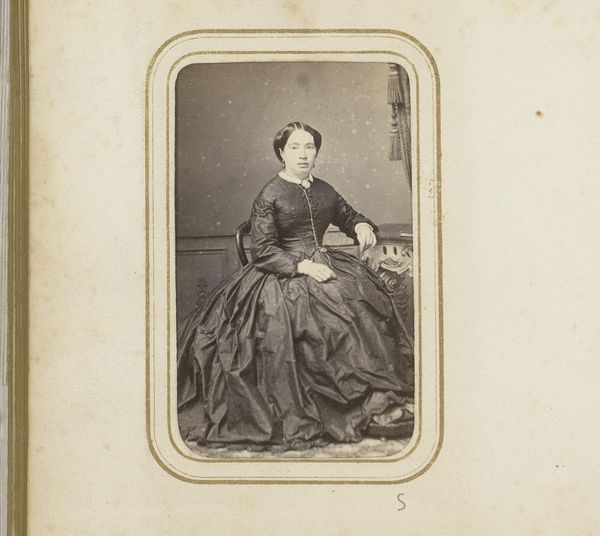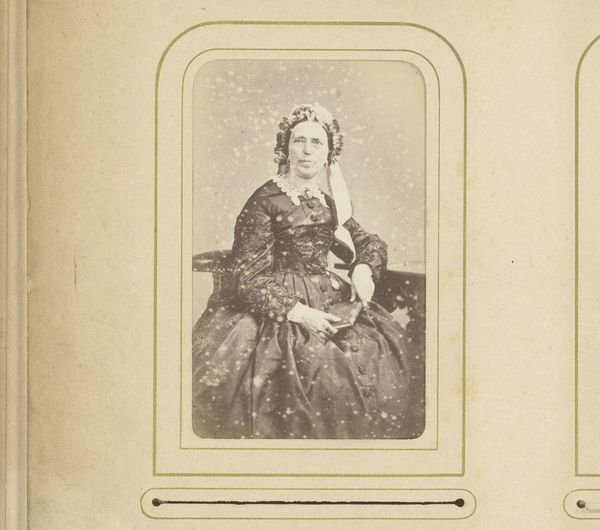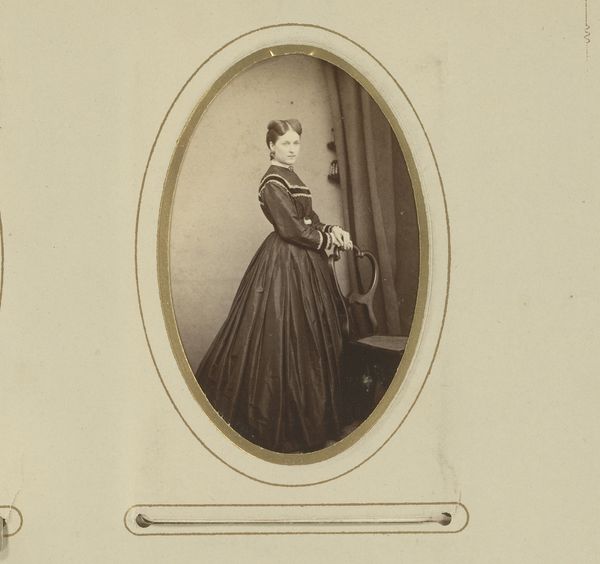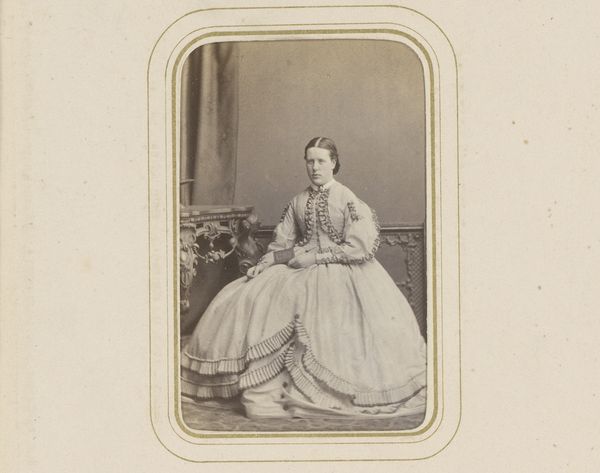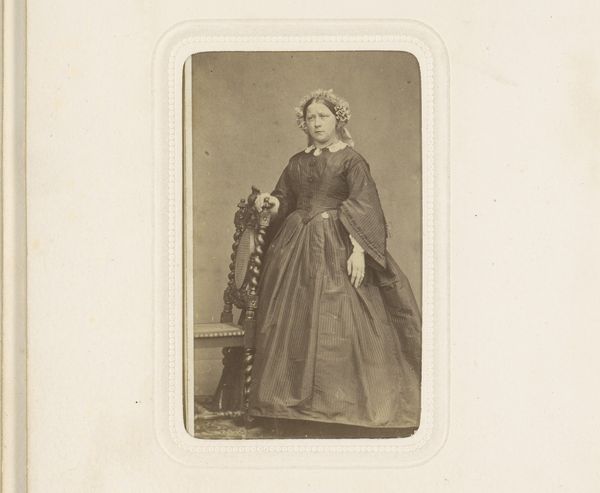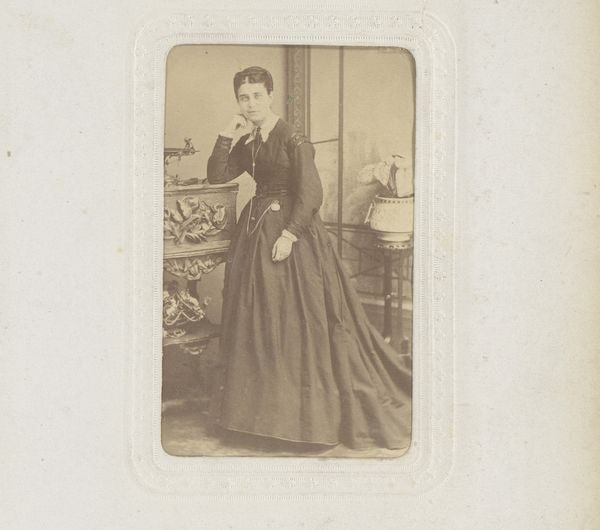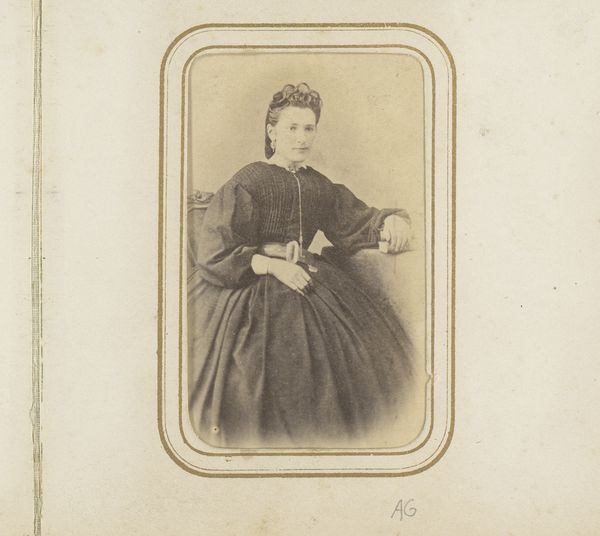
photography
#
portrait
#
photography
#
historical photography
#
19th century
#
realism
Dimensions: height 82 mm, width 50 mm
Copyright: Rijks Museum: Open Domain
Curator: Let's turn our attention to this photographic portrait, believed to be the work of Dirk Niekerk, titled "Portret van een vrouw, staand bij een stoel" or "Portrait of a woman, standing by a chair." The piece dates between 1864 and 1879. Editor: It's certainly a somber image. The light is so carefully controlled, isn't it? Almost theatrical. Her dress and the drape behind her are almost the same tone; the focus seems drawn solely to her face and hands. Curator: Exactly! The dark, enveloping colors draw us in. Let’s consider the semiotics of such portraits at that time. Often, the chair was used as a symbol of status, of stability, perhaps even subtly hinting at the sitter's role within her family or society. Notice how she lightly rests her hands on the chair—is it ownership, subservience or simply support? Editor: Interesting. I'm more intrigued by the materials visible here. Look at the dress - you can almost feel the weight of that fabric. It seems skillfully tailored; probably produced by seamstresses working under considerable pressure. The creation of this photograph itself… the chemistry, the long exposure times, the skilled labor of the photographer. It’s a record of complex production processes. Curator: A fascinating contrast. On one level, this is about representing her social standing, projecting an image. At another level, this is about showing her essence. The muted tones, almost like an old memory. What endures across the years isn’t just a face but perhaps something about the shared experience of women in that era. Editor: And isn’t that shared experience rooted in those very material conditions? Access to finer fabrics, to fashionable tailors, to portraiture. The act of being photographed was an exclusive experience that reflected larger class disparities, it speaks to the society behind her persona. Curator: Point taken. It reminds us that what we see—the composed portrait—is both revealing and concealing. It speaks volumes not just about one woman but about the society that shaped her self-perception. Editor: And reminds us how material constraints and class dictate our understanding of representation. So much labor is packaged in one simple looking picture!
Comments
No comments
Be the first to comment and join the conversation on the ultimate creative platform.
